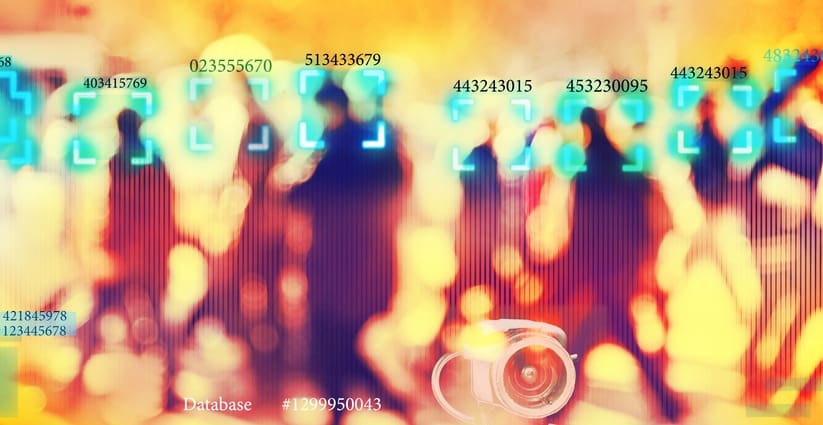Digital Protection Services have become so much more than guns, gates and guards. As risk factors and threat vectors continue to expand across the digital and physical spheres, Protective Services must now encompass cyber and physical security efforts with a particular focus on the individual—thus sparking the phenomenon of “digital” close protection. Core considerations, such as advanced site-reconnaissance and principal schedule management, still remain, but increasingly diverse attack surfaces must be accounted for when implementing any close protection strategy. As such, the skill in combining situational awareness with physical security has never been more crucial for both basic and enhanced physical security needs.
Security Teams Face More Responsibility, But Have Fewer Resources
Protective Services teams are widely responsible for open- and all-source risk management for their organizations, but many lack the resources and headcount to provide adequate close protection against increasingly common and sophisticated attacks. Staffing shortages for security officers are reaching critical levels across Europe, and security teams are faced with heavier workloads, unfilled positions and employee burnout. Even more of the cybersecurity workforce plans to leave the industry within the next few years, which does not bode well for organizations expecting increased threats in 2023.
Lindsay Whyte
Regional Sales Director
The pressures placed on Protective Services teams are compounded by growing demands for enhanced protection from the world’s most prominent, wealthy and powerful. Covering online reputation, leaked confidential information and risks faced by younger, digitally native family members has become an urgent priority, but security professionals struggle to keep up and provide effective close protection. Despite the ongoing global security skills crisis, existing professionals can still strengthen their protective capabilities through automated digital intelligence, which covers more jobs, more remotely, across a wider range of threats.
Evolving Attacks Mean Protective Intelligence is a Must-Have
To truly protect an asset, security leaders must think holistically across physical and digital dimensions. Physical property is only longer exclusively physical, as threat actors find new, creative ways to launch physical and reputational attacks using digital resources. Leaked online data from open-source platforms, such as trade secrets, confidential information and location details, can easily lead to synthetic ID fraud, IP counterfeiting, account takeovers, blackmail and unauthorized entry. As employees, executives, VIPs and physical sites become more digitally accessible, they inevitably become more vulnerable to a wide range of threats, thus requiring comprehensive digital and physical monitoring to achieve precise close protection.
From a financial and temporal perspective, protective intelligence is quickly becoming a key tactical weapon for the modern security professional. Protective intelligence uses continuous monitoring and threat assessment methodology to proactively identify, evaluate and mitigate emerging risks to organizations, individuals and infrastructure, making it especially useful for security teams that lack the time or employees for constant manual monitoring. The unique ability of protective intelligence platforms to observe several data sources at once—including social media, public databases, the deep and dark web, digital communities and more—while also reducing manual labor has earned it a permanent spot in many security teams’ toolkits.
Even with the introduction of advanced protective technologies, the persisting threats from misinformation and hacktivism toward prominent people and places can irrevocably damage identities in today’s fast-paced (and attention deficient) world. A VIP can go from hero-to-zero in a matter of seconds, further reinforcing the need for a complete view of physical and digital landscapes.
Constella Intelligence surveyed 100 members of The Security Institute, the United Kingdom’s largest professional membership body for security professionals. Key findings include:
- Investment (39%) and privacy (39%) are the biggest blockers to providing “digital” close protection for Executive Protection teams (39%).
- Nearly half (48%) of respondents find it too time consuming to conduct OSINT monitoring and investigations, and about one in three (33%) think it is too complex.
○ Despite this, 48% of respondents believe OSINT monitoring should sit with Protective Services because it falls under all-source protection.
○ 30% of respondents believe OSINT monitoring should sit with Protective Services, but there is no bandwidth for it.
- Only 2% of respondents have already mastered OSINT within their organizations.
It is only through a complete understanding of threats targeting organizational and individual assets that security officers will be able to effectively and appropriately navigate the circumstances they encounter. Future-proofing the physical security profession is no small feat, but it can be accomplished by merging cyber and physical efforts and transitioning to a hybrid security model. Close protection must take on a new “digital” role to truly safeguard businesses, people and physical assets.
Read Constella’s Findings: Setbacks for OSINT and “Digital” Close Protection






